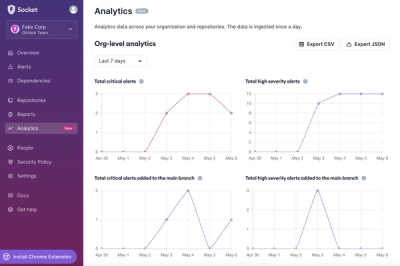Introduction
The @effect/rpc library facilitates the development of remote procedure call (RPC) systems in TypeScript, enhancing application scalability and maintainability. It provides a type-safe environment that reduces runtime errors by aligning with TypeScript's strong typing. This library simplifies the creation of network-exposed services, handling the intricacies of data serialization and network communication, allowing developers to concentrate on core business logic. Its features support custom serialization, error handling, and middleware, making it adaptable for diverse application needs.
Quickstart
Declaring Requests
The TaggedRequest API in the @effect/schema library is designed to facilitate the creation of structured requests that can serialize function signatures involving input arguments, successful outcomes, and potential failures. Essentially, it's a tool for defining a serializable function that can be reliably transported across different systems or network layers.
Here’s a simplified explanation:
-
Function Modeling: TaggedRequest allows you to model a function signature as a class, which includes the input arguments, the type of the success response, and the type of the failure response.
-
Serialization Schema: For each component (input, success, failure), you specify a corresponding schema. This setup helps ensure that the data associated with each request can be properly serialized (converted to a format suitable for storage or transmission) and deserialized (converted back to usable format).
-
Usage Scenario: This API is particularly useful when you need to handle remote procedure calls (RPCs) where functions and their arguments need to be sent over a network, processed, and then responded to asynchronously.
-
Streamlined Code: By leveraging Schema.TaggedRequest, developers can reduce the amount of boilerplate code typically required for handling complex data serialization and deserialization tasks in distributed systems.
In practice, when you create an instance of TaggedRequest, you define the function's behavior along with its serialization rules, which streamlines the process of encoding input data, sending it across a network, and decoding responses.
sequenceDiagram
Sender->>SenderBound: encodes A to I
SenderBound-->>ReceiverBound: send I
ReceiverBound->>Receiver: decodes I to A
Receiver->>ReceiverBound: encodes Exit<Success, Failure><br/>to Exit<SuccessEncoded, FailureEncoded>
ReceiverBound-->>SenderBound: send back<br/>Exit<SuccessEncoded, FailureEncoded>
SenderBound->>Sender: decodes Exit<SuccessEncoded, FailureEncoded><br/>to Exit<Success, Failure>
import { Schema } from "@effect/schema"
export class User extends Schema.Class<User>("User")({
id: Schema.String,
name: Schema.String
}) {}
export class UserList extends Schema.TaggedRequest<UserList>()(
"UserList",
Schema.Never,
Schema.Array(User),
{}
) {}
export class UserById extends Schema.TaggedRequest<UserById>()(
"UserById",
Schema.String,
User,
{
id: Schema.String
}
) {}
export class UserCreate extends Schema.TaggedRequest<UserCreate>()(
"UserCreate",
Schema.Never,
User,
{
name: Schema.String
}
) {}
Defining a Router
This section introduces how to configure a router using an imaginary database setup to manage user data.
import { Router, Rpc } from "@effect/rpc"
import { Effect, Ref } from "effect"
import { User, UserById, UserCreate, UserList } from "./request.js"
const ref = Ref.unsafeMake<Array<User>>([
new User({ id: "1", name: "Alice" }),
new User({ id: "2", name: "Bob" })
])
const db = {
user: {
findMany: () => ref.get,
findById: (id: string) =>
Ref.get(ref).pipe(
Effect.andThen((users) => {
const user = users.find((user) => user.id === id)
return user
? Effect.succeed(user)
: Effect.fail(`User not found: ${id}`)
})
),
create: (name: string) =>
Ref.updateAndGet(ref, (users) => [
...users,
new User({ id: String(users.length + 1), name })
]).pipe(Effect.andThen((users) => users[users.length - 1]))
}
}
export const appRouter = Router.make(
Rpc.effect(UserList, () => db.user.findMany()),
Rpc.effect(UserById, ({ id }) => db.user.findById(id)),
Rpc.effect(UserCreate, ({ name }) => db.user.create(name))
)
export type AppRouter = typeof appRouter
Serving the API
This part explains how to serve the API using the defined router.
import { HttpRouter, HttpServer } from "@effect/platform"
import { NodeHttpServer, NodeRuntime } from "@effect/platform-node"
import { toHttpApp } from "@effect/rpc-http/HttpRouter"
import { Layer } from "effect"
import { createServer } from "http"
import { appRouter } from "./router.js"
const HttpLive = HttpRouter.empty.pipe(
HttpRouter.post("/rpc", toHttpApp(appRouter)),
HttpServer.serve(),
HttpServer.withLogAddress,
Layer.provide(NodeHttpServer.layer(createServer, { port: 3000 }))
)
NodeRuntime.runMain(Layer.launch(HttpLive))
Testing the API with curl
Use this curl command to test if the API is operational:
curl -X POST http://localhost:3000/rpc \
-H "Content-Type: application/json" \
-d '[
{
"request": { "_tag": "UserList" },
"traceId": "traceId",
"spanId": "spanId",
"sampled": true,
"headers": {}
}
]'
Using your new backend on the client
Let's now move to the client-side code and embrace the power of end-to-end typesafety.
import { HttpClient, HttpClientRequest } from "@effect/platform"
import { Resolver } from "@effect/rpc"
import { HttpResolver } from "@effect/rpc-http"
import { Effect } from "effect"
import { UserCreate, UserList } from "./request.js"
import type { AppRouter } from "./router.js"
const client = Resolver.toClient(
HttpResolver.make<AppRouter>(
HttpClient.fetchOk.pipe(
HttpClient.mapRequest(
HttpClientRequest.prependUrl("http://localhost:3000/rpc")
)
)
)
)
const program = Effect.gen(function* () {
let users = yield* client(new UserList())
if (!users.find((user) => user.id === "3")) {
console.log(`Creating user "Charlie"`)
yield* client(new UserCreate({ name: "Charlie" }))
users = yield* client(new UserList())
} else {
console.log(`User "Charlie" already exists`)
}
return users
})
Effect.runPromise(program).then(console.log)
Stream
Setting Up the Stream Request
import * as Rpc from "@effect/rpc/Rpc"
import { Schema } from "@effect/schema"
export class Counts extends Rpc.StreamRequest<Counts>()(
"Counts",
Schema.Never,
Schema.Number,
{}
) {}
Defining the Router
In the router setup, we link the Counts request to a function that emits numbers from 1 to 5 at regular intervals.
import { Router, Rpc } from "@effect/rpc"
import { Effect, Stream } from "effect"
import { Counts } from "./request.js"
export const appRouter = Router.make(
Rpc.stream(Counts, () =>
Stream.make(1, 2, 3, 4, 5).pipe(Stream.tap(() => Effect.sleep("1 second")))
)
)
export type AppRouter = typeof appRouter
Serving the API
The server code configures an HTTP server to handle requests, using our appRouter to manage incoming stream requests.
import { HttpRouter, HttpServer } from "@effect/platform"
import { NodeHttpServer, NodeRuntime } from "@effect/platform-node"
import { toHttpApp } from "@effect/rpc-http/HttpRouter"
import { Layer } from "effect"
import { createServer } from "http"
import { appRouter } from "./router.js"
const HttpLive = HttpRouter.empty.pipe(
HttpRouter.post("/rpc", toHttpApp(appRouter)),
HttpServer.serve(),
HttpServer.withLogAddress,
Layer.provide(NodeHttpServer.layer(createServer, { port: 3000 }))
)
NodeRuntime.runMain(Layer.launch(HttpLive))
Consuming the Stream from the Client
import { HttpClient, HttpClientRequest } from "@effect/platform"
import { Resolver } from "@effect/rpc"
import { HttpResolver } from "@effect/rpc-http"
import { Effect, Stream } from "effect"
import { Counts } from "./request.js"
import type { AppRouter } from "./router.js"
const client = Resolver.toClient(
HttpResolver.make<AppRouter>(
HttpClient.fetchOk.pipe(
HttpClient.mapRequest(
HttpClientRequest.prependUrl("http://localhost:3000/rpc")
)
)
)
)
const program = Effect.gen(function* () {
yield* Effect.log("Running the client")
const stream = client(new Counts())
return yield* stream.pipe(
Stream.tap((element) => Effect.log(element)),
Stream.runCollect
)
})
Effect.runPromise(program)



